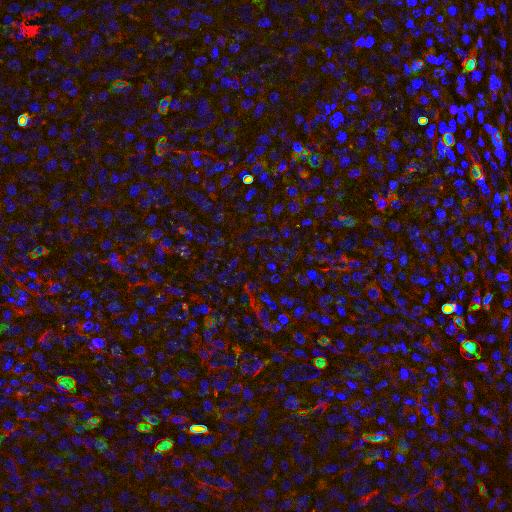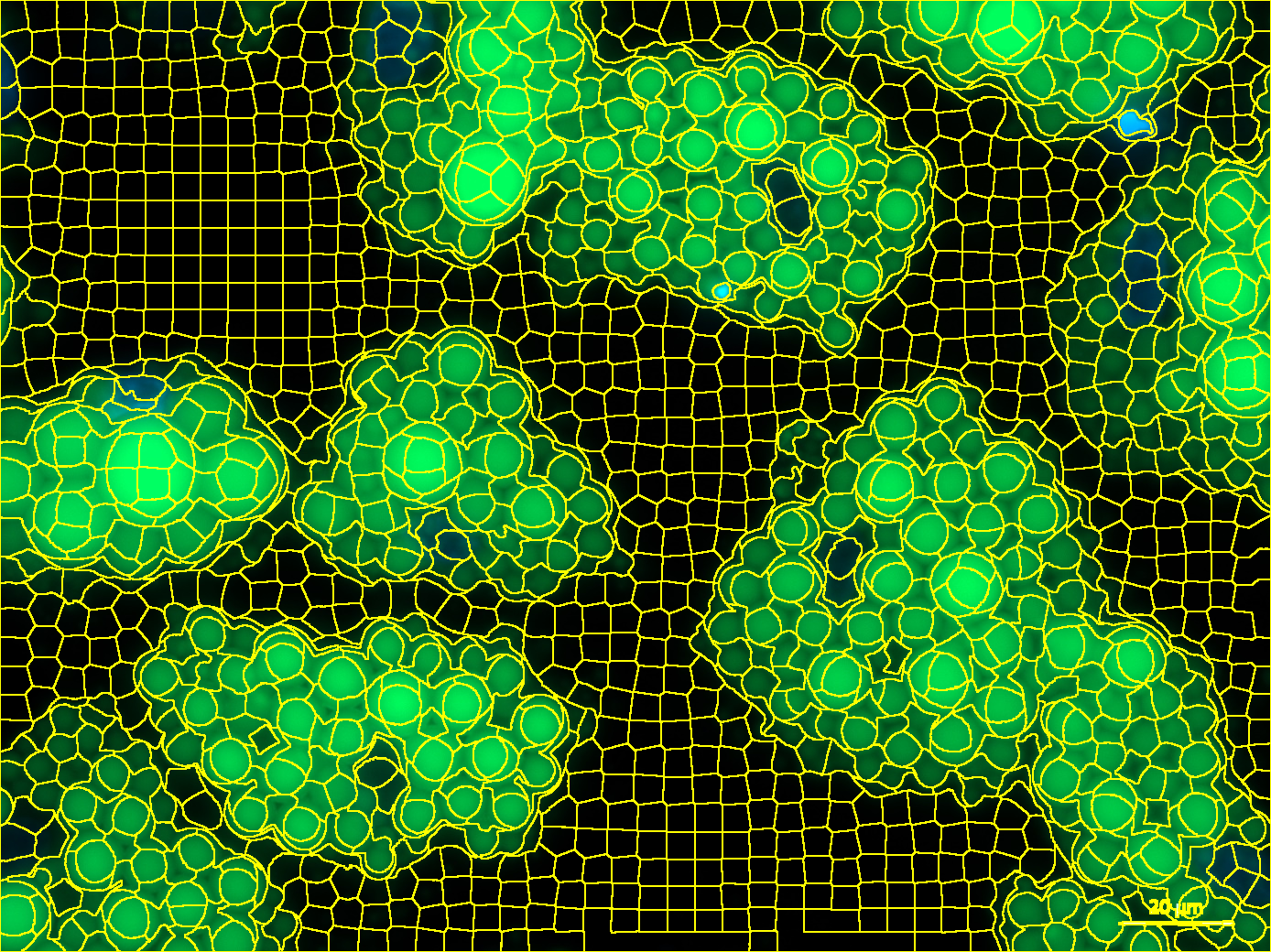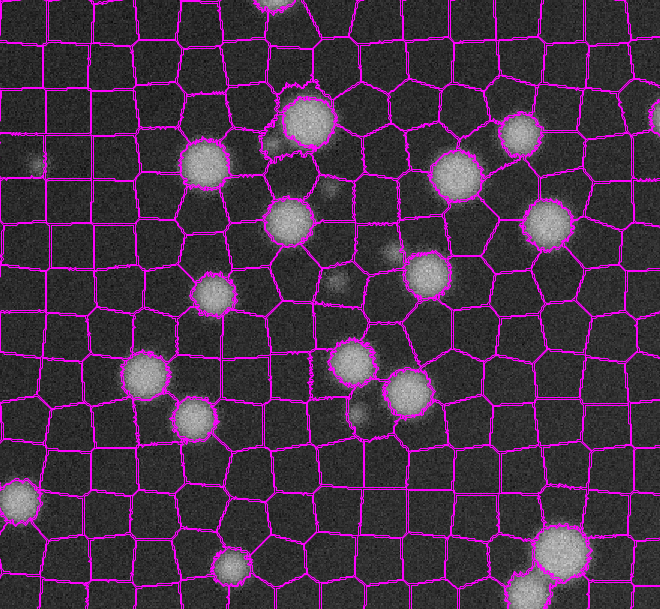TI - MontpellierRessourcesImagerie/imagej_macros_and_scripts GitHub Wiki
ComDet - Spot detection and object-based colocalization
18.12.2020
Developed in Cell Biology group of Utrecht University. Please visit the project on github for more information.
This is an open-source ImageJ plugin for finding spots and for analyzing colocalization (particles, vesicles, comets, dots, etc) in images with heterogeneous background (microscopy, astronomy, engineering, etc).


The plugin has a preview when setting the parameter. The parameter are the sigma for the LoG filter and the threshold. The result of the LoG-filter is thresholded, some morphology is applied and the object centers are calculated. Objects in different channels closer then a min. distance are reported as colocalized.
Simple Linear Iterative Clustering (SLIC) Superpixels
11.12.2019
Borovec, J., & Kybic, J. (2014). jSLIC : superpixels in ImageJ. Computer Vision Winter Workshop. Praha.
Achanta, R., Shaji A., Smith K., Lucchi AA., Fua, P., Süsstrunk, S., SLIC Superpixels, EPFL, 2010
Superpixel group homogeneous regions of pixel which are then used in image processing and analysis instead of the pixel. The SLIC consists in creating the superpixel in an efficient way, by using a simplified k-means clustering on the 5 dimensional space of LAB-color plus the 2 spacial coordinates.


Adaptive particle representation (APR)
04.12.2019
Cheeseman, B.L., Günther, U., Gonciarz, K., Susik, M., and Sbalzarini, I.F. (2018). Adaptive particle representation of fluorescence microscopy images. Nat Commun 9, 5160.
The approach replaces pixel by particles. Particles can have different sizes and are not on a regular grid like pixel. In regions with a lot of intensity changes small particles are used and in more homogeneous regions larger particles. The APR provides local gain control by guiding the adaptation with a local intensity scale.
There is an implementation on github here: AdaptiveParticles on github
Ridge Detection
17.09.2019
Steger, C. (1998). An unbiased detector of curvilinear structures. IEEE Transactions on Pattern Analysis and Machine Intelligence, 20(2), 113–125. doi:10.1109/34.659930
The paper describes a method to extract lines and their widths. The method proposed has some characteristics, that make it extremely useful for the detection of filament like structures in biological images.
- The correct centre-line is found even when the line-profiles are asymmetric
- The width of the filament is detected
- Crossing filaments do not disturb the detection since the environment is taken into consideration
- The parameters are meaningful: max. line width, min. contrast, ...
- Yields results with sub-pixel resolution
An ImageJ-plugin named Ridge Detection implementing the method has been written by Thorsten Wagner and Mark Hiner.
It seems to work well for young roots up to roots of intermediate complexity. Like in this image:
